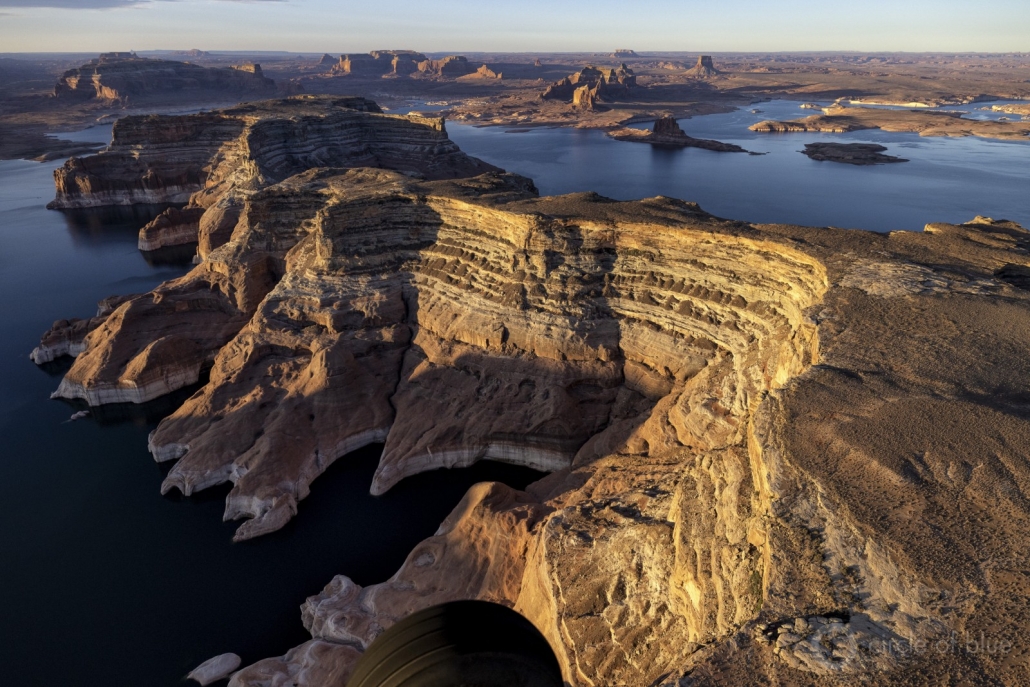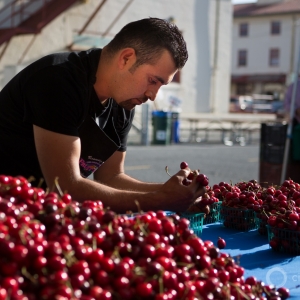The Stream, July 6, 2022: Which Western States Are On the Hook for Cutting Water Use?

Lake Powell. Photo © J. Carl Ganter / Circle of Blue
YOUR GLOBAL RUNDOWN
- Colorado’s top water official weighs in the responsibility lower Colorado River Basin states have in cutting water use.
- A new study links childhood diarrheal disease with drought exposure in low-and-middle-income countries.
- India’s major reservoirs sit at critically low levels even as monsoon rains pummel parts of the country.
- Officials ask residents in Sydney, Australia to evacuate amid flooding for the third time this year.
Officials say drinking water at a naval base in Hawaii is clean, but returning residents are still getting sick.
“Pearl Harbor used to be the greatest fishpond that Hawai’i had ever known. Pearl Harbor fed the ali’i’ [royalty], fed the commoners and it’s all gone, because the military owns all our land. But you don’t own me.’’
– Mary Maxine Kahaulelio, the leader of the Wai Ola Alliance, a community activist group in Hawaii.
As residents at Joint Base Pearl Harbor-Hickam on the Hawaiian island of Oahu returned home months after jet fuel from a U.S. navy underground storage facility contaminated a major drinking water aquifer, many say they are continuing to get sick. Some returning residents have taken to Facebook to share sights of oil sheens on nearby waters, along with reports of a myriad of health problems. Still, the Guardian reports, the navy has failed to provide up-to-date information about possible toxins in residents’ tap water. Navy officials have said there is no proof that the long-term medical symptoms experienced by residents are related to the contamination. One senior medical officer said that stress may be a factor.
— Jane Johnston, Stream Editor
‘More Than Mother Nature Provides’: Top Colorado Water Official Says Western States Should Not Have To Distribute Water Cuts Evenly
Last month, the federal government ordered six states in the Colorado River basin – Colorado, Utah, Wyoming, New Mexico, California, Nevada, and Arizona – to create a plan to cut water usage by up to 4 million acre-feet. Last week, Colorado’s top water official Becky Mitchell told Colorado Public Radio that the bulk of that burden should fall on Arizona, Nevada, and California. Mitchell explained that those lower basin states have relied too heavily on Lake Mead and Lake Powell, and have thus over extracted water from the dwindling basin. “They’re using more than mother nature provides,” the Colorado Water Conservation Board commissioner said.
More Drought News:
- As drought spreads throughout California, local food systems are under threat.
- Drought in Texas is pushing wildlife looking for water into populated areas, increasing the risk of attacks and the spread of diseases like rabies.
- Laser technology is being used in Colorado to measure snowpack in drought-stricken areas and provide critical information to farmers and water managers.
This Week’s Top Water Stories, Told In Numbers
5 TO 8 PERCENT INCREASE
A new study found that children in low-and-middle-income countries (LMICs) are at a greater risk of developing diarrheal diseases when exposed to mild or severe drought. The study, published in Nature Communications, found that when children under five years of age in 51 LMICs were exposed to mild drought, rates of diarrhea increased five percent. That number jumped to eight percent when exposed to severe drought.
- In Context: Like clockwork, diarrhea among children spikes sharply during Cape Town’s long summer. The city tends to blame the heat and people’s poor hygiene practices, but its own sewage infrastructure may be the real culprit, the Center for Collaborative Investigative Journalism
101 RESERVOIRS
As monsoon rains batter northwest India, water levels in many of the country’s major reservoirs remain low. Of the country’s 143 monitored reservoirs, 101 are reporting 40 percent capacity or less. At least five reservoirs have completely dried up.
On the Radar
In Sydney, Australia, 50,000 people were told to evacuate their homes this week amid severe flooding from rains that began over the weekend. Parts of the city received nearly eight months of rain in just four days. This is the third evacuation order due to flooding in Sydney this year. Although meteorologists say the rain is expected to ease, forecasts predict gale-force winds later this week, which could bring down trees and powerlines. Climate experts say the disaster has been worsened by climate change and La Niña, a weather phenomenon that increases the likelihood of rain, cyclones, and cooler daytime temperatures.
More Water News
India’s ‘Water Warriors’: A group of over 1,000 women in India’s Bundelkhand region are working together to revive drained water sources.
Shrinking Global Lake Levels: A recent study used satellite observations and modeling tools to quantify evaporation volume on more than a million global lakes to assess climate change’s impact.
Sewage in Paradise: A favela in Rio De Janeiro’s Tijuca Forest National Park has clean water for the first time in decades.
Jane is a Communications Associate for Circle of Blue. She writes The Stream and has covered domestic and international water issues for Circle of Blue. She is a recent graduate of Grand Valley State University, where she studied Multimedia Journalism and Women, Gender and Sexuality Studies. During her time at Grand Valley, she was the host of the Community Service Learning Center podcast Be the Change. Currently based in Grand Rapids, Michigan, Jane enjoys listening to music, reading and spending time outdoors.






Leave a Reply
Want to join the discussion?Feel free to contribute!